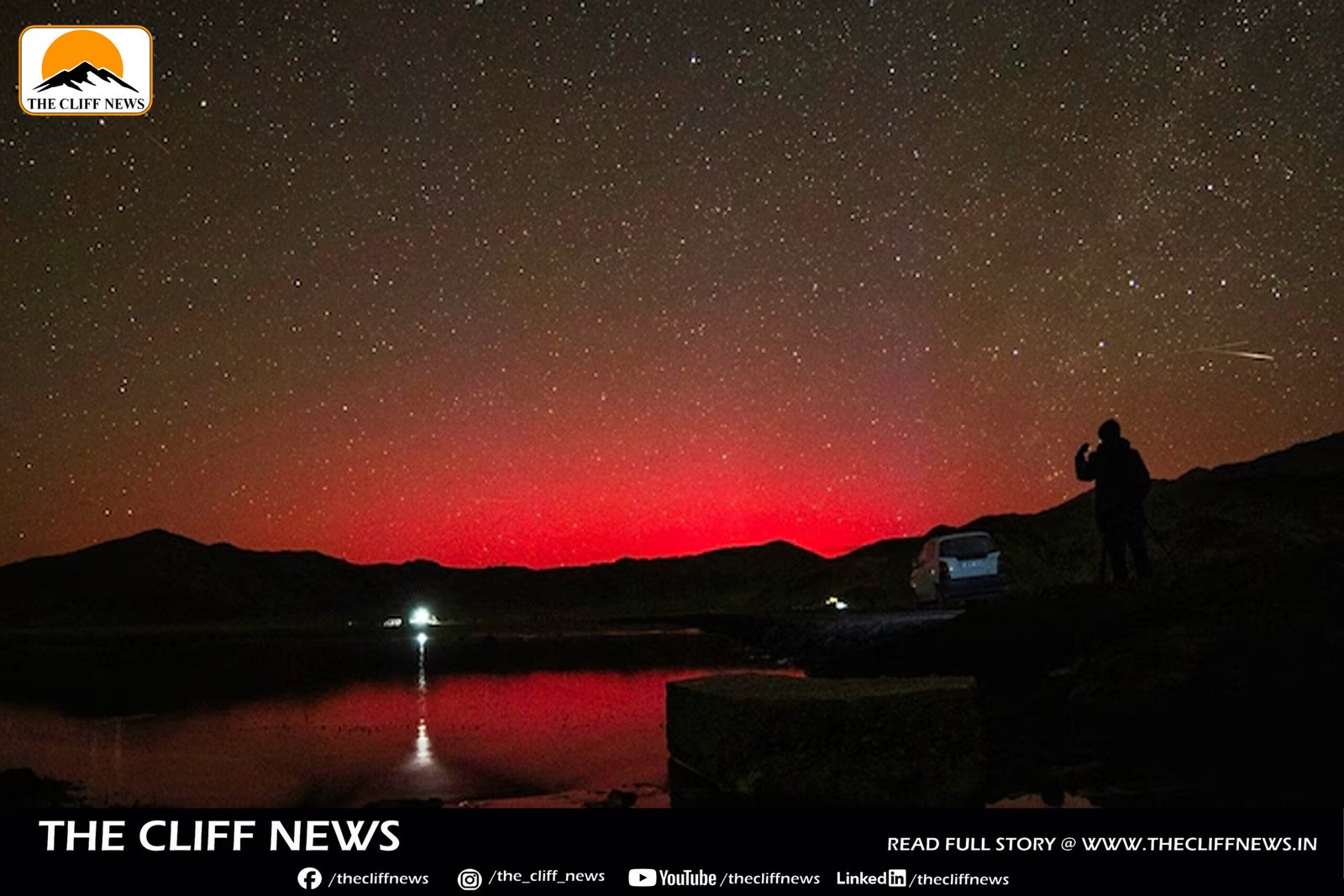In a groundbreaking revelation, scientists from the Indian Institute of Astrophysics (IIA) have decoded the extraordinary cosmic chain of events that led to a rare aurora borealis display over Ladakh in May 2024 — a phenomenon typically confined to the polar regions.
This dazzling show in the remote Himalayan skies was triggered by a record-breaking solar storm, powered by six massive, rapidly interacting Coronal Mass Ejections (CMEs) — immense bursts of magnetized plasma ejected from the Sun’s outer atmosphere.
“This was a unique sequence of six interacting CMEs, associated with solar flares and filament eruptions, all originating from a hyperactive region on the Sun,” said Dr. Wageesh Mishra, faculty at IIA.
Using data from NASA and ESA space observatories, researchers at the Indian Astronomical Observatory in Hanle, Ladakh, built advanced models to trace the thermal evolution and dynamics of the solar storms as they hurtled through space.
Published in the journal Astronomy and Astrophysics, the study marks a scientific first: it offers a continuous thermal profile of multiple interacting CMEs. According to lead author and PhD researcher Soumyaranjan Khuntia, the solar plasma clouds initially released heat, but as they journeyed through interplanetary space, they began to absorb and retain heat, stabilizing at a constant temperature—a surprising discovery that challenges existing assumptions about solar ejections.
Back on Earth, NASA’s Wind spacecraft detected an unusual structure within the final CME cloud — “double flux ropes”, or twisted magnetic braids. Their interaction with Earth’s magnetic field caused the dramatic and rare auroras seen across Ladakh’s skies.
“This work lays the foundation for a new frontier in space weather forecasting,” noted Anjali Agarwal, a co-author of the study.
With India’s Aditya-L1 solar mission now operational and observing the Sun from a vantage point near Lagrange Point 1, the IIA team aims to enhance predictive models for future solar storms and their impact on Earth’s satellites, power grids, and communications.
“India is well on its way to becoming a powerhouse in heliophysics research,” said Dr. Mishra. “Our growing capabilities will help protect modern infrastructure from solar hazards in the years to come.”
The 2024 Ladakh aurora remains a historic and awe-inspiring event — not just for its beauty, but for the cutting-edge science it has inspired.



